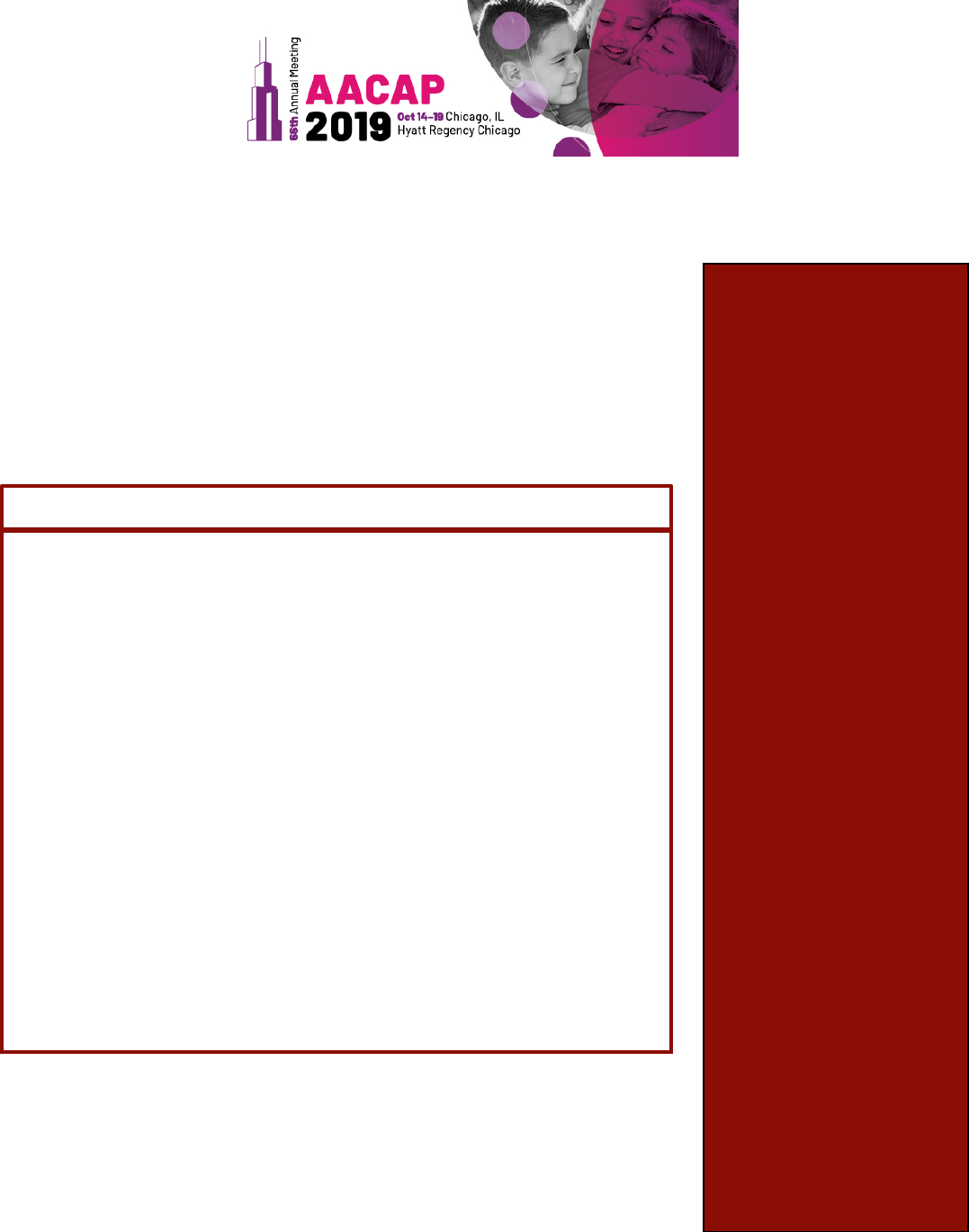
Instructions for Institute Sessions
Note to Institute chair(s): The Meetings Department sends this information to
session Institute chair(s) only with the understanding that the chair(s) will
appropriately distribute these instructions to all co-presenters.
Institute sessions focus on “how to do it” with respect to clinical problems, academic
areas, or a blending of the two. Institutes are 6-8 hours and designed for attendees
who wish to be taught a comprehensive and authoritative overview of a topic area.
Attendees pay extra for Institute tickets.
Institute Notebooks
• Chair: Submit your Institute’s presentations – formatted for publication – no
later than Friday, July 20. This may seem very far in advance of your
presentation; however, all materials must be assembled by the Institute
chair, then reviewed and approved by our Institutes Subcommittee, and then
formatted by AACAP staff.
Each Institute Notebook takes weeks to prepare. This is one of the most time-
consuming projects that AACAP completes and is printed before the Annual
Meeting. In addition, the Institutes Subcommittee reviews all notebook
materials and may give suggestions for improvement. In order for AACAP to
have adequate time to compile all of your materials, look over the slides, and
make sure they are CME acceptable, take note of the following important due
dates.
• Friday, July 5, 2019 – Materials to Institute Chair for review.
• Wednesday, July 1, 2019 – AV Requests (via online speaker
form).
• Friday, July 12, 2019 – Materials for Institute Notebook to
AACAP including PowerPoint slides, learning objectives,
disclosures, Institute questions, annotated bibliography, and
any articles to be printed with your presentation with
copyright permission.
Table of Contents
Institute Notebooks
Presentation Guidelines
Disclosure of Affiliations
Audio Visual
Recording
Registration
Non-Member Presenters
Travel and Reimbursement
Honoraria
Travel and Hotel
Reservations
Scheduling
Publications
Speaking
Onsite
Mission of AACAP’s
Continuing Medical
Education (CME)
Satellite Symposia
Program Sponsorship
Press
Evaluations
Photography/Cellphone Use
Appendix
Important Deadlines
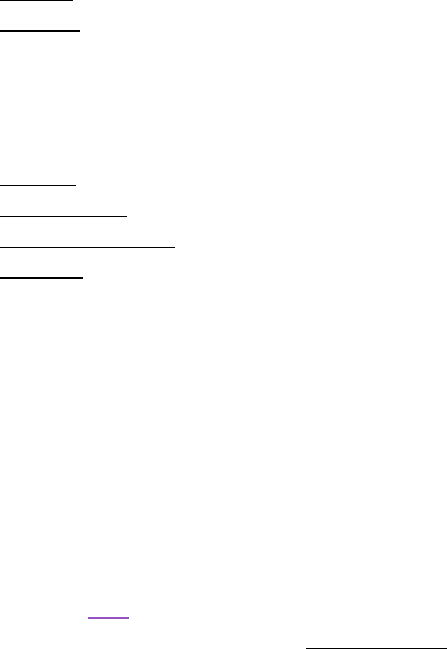
• Presenters: Upload materials no later than Friday, July 5 to give your Chair time to review your notebook
materials.
All Institute presenters will be able to upload Institute materials to AACAP’s online submission system, which eliminates
the need to send large files via email. More information on this system will be sent in June.
Institute notebooks will be posted on a secure website for Institute registrants to download. AACAP will still provide
printed notebooks, but it is our hope that some attendees will only need the electronic version.
Presentation Guidelines
We highly encourage speakers to use PowerPoint slides to complement their presentation and to provide
visual and textual evidence of their talk. All PowerPoint presentations are thoroughly reviewed by the Institute
Sub-Committee and Meetings and CME Department for clarity, comprehension, and formatting. It is
imperative for speakers to submit their slides in the form of a PowerPoint presentation for a convenient and
intuitive review and editing process.
Slides
Slide Maximum: The Program Committee strongly suggests that you only have one slide per minute of your talk. Keep in
mind that your slides must be detailed enough to stand alone as people refer back to Institute notebooks and some
people buy them without attending the session. Please adhere to the following guidelines when creating your slides:
• Order of slides:
1st slide: Title of talk, your name, and affiliation
2nd slide: Disclosure statements - Include disclosures that you listed on your Disclosure Statement
(commercial/financial conflicts of interest) as well as any off-label medication uses you recommend in your
presentation.
o If you have no conflicts, state “No conflicts of interest or disclosures.” See below for more information
on AACAP’s disclosure policies.
3rd slide: 3-5 brief learning objectives of your presentation - put all in one slide.
Content slides: Body of presentation - maximum 1 slide per minute of your talk.
Second-to-last slide: Information that addresses the clinical relevance of the information presented.
Last Slide: Summary slide for your presentation.
References: An optional slide listing all references used in your presentation.
• Header for each page: Your name in the upper right-hand corner and the title of your presentation in the upper
left-hand corner. Use Times New Roman, 12-point font. To insert your header, go to: View/Master/Handout
Master.
• Generic names must be used for medications (with trade name in parenthesis).
• Use large fonts that can be read easily when printed three slides to a page, and can be seen from the back of the
room (min. Times New Roman, point size: 32).
• DO NOT put blurry scanned pages from journals in your slides.
• Only use official abbreviations, and when using an abbreviation, make sure to spell out the entire word, or term,
the first time it is used in your presentation. A list of the most common abbreviations and acronyms can be
reviewed here
.
• Institute notebooks are printed in black and white. Please use patterns to differentiate charts or graphs rather
than color.
• DO NOT number pages or include a footer (AACAP will number the entire Notebook).
• You can review a sample slide presentation at the end of this document.
Institute Questions:
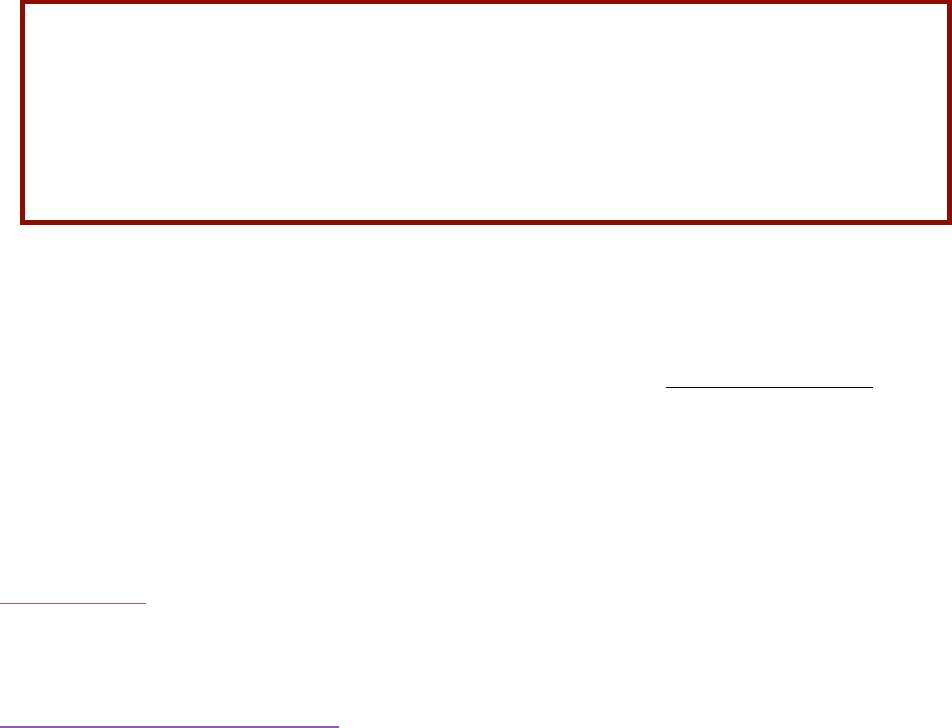
• 5 Institute Questions with Answer Key: Multiple choice only; each question must have only one correct answer.
• A well-written question is one that the attendee can answer without having to look at the answers. To do that,
keep these rules in mind:
o Do NOT include a question that is Which of the following is true or Which of the following is false. We
call these “True/False” questions. We will be asking you to rewrite these types of questions.
o Stems should be a complete sentence or question. For example, avoid stems such as, "ADHD is..." This is
unfocused and not a complete sentence or question.
o Stems should be stated positively, asking for a correct answer, not a "wrong" answer. Avoid words like
except, not, least, and never that suggest a negative stem.
• Do NOT use answers such as All of the above, None of the above, or Both A and C.
• Do NOT include fill in the blank questions.
• Avoid imprecise terms like seldom, usually, sometimes, occasionally, rarely, few, many.
• Answers should follow a logical order - dates should be chronological, numbers typically smallest to largest, the
first word should be alphabetized, and options do not overlap (i.e., avoid answers such as 1-5%, 5-10%, 10-15% -
these answers overlap).
• Please double check your answer key to be sure that the correct answer is selected.
Annotated Bibliography:
• Include 3-5 items in your annotated bibliography.
• All references should be AMA style.
• An annotated bibliography includes a brief description of the summary of the citation. For example:
Additional Presentation Materials:
• If you wish to include an article, please make sure that the article is, in good condition to be photocopied.
• Copyright permission is required! A letter or statement from the publisher or copyright holder indicating
permission to reproduce up to 1,000 copies for inclusion in our notebooks must be sent to AACAP. The actual
number of copies required for your institute will likely be fewer.
• Any article lacking reprint authorization cannot be published. This includes AACAP Practice Parameters/Clinical
Practice Guideline/Clinical Practice Updates and articles from JAACAP (see information below). Costs associated
with obtaining permission to reprint an article are the responsibility of the presenter. Permission is not required
to reprint articles from AACAP News.
• To request permission to reprint content from JAACAP (including AACAP Practice Parameters), visit
www.jaacap.org
and click on the Rights/Permissions link in the Article Tools menu to open a prepopulated form
directly from the article page. Once permission has been obtained, download the article directly from the
website and provide unaltered in your notebook submission. Permission to reprint the material must
accompany your notebook submission. More information can be found at
www.jaacap.com/content/permission.
Gleason MM, Egger HL, Emslie GJ, et al. Psychopharmacological treatment for very young children:
contexts & guidelines. Journal of the American Academy of Child and Adolescent Psychiatry.
2007;46(12):1532-1572.
Reviews developmental considerations related to preschool psychopharmacological treatment,
presents current evidence bases for specific disorders in early childhood, and describes the
recommended algorithms for medication use.

Disclosure of Affiliations – WE TAKE THIS SERIOUSLY!
Disclosure of conflict of interest and affiliations is an important and serious matter.
• Disclosure is required and considered to be an obligation of all attendees who present at the Annual Meeting.
• Full disclosure is a requirement of AACAP and our accrediting institution, the Accreditation Council for
Continuing Medical Education (ACCME).
• The Program Committee and CME Committee monitor disclosures during the meeting.
• Failure to disclose is construed to be an ethical violation that will result in disciplinary action by AACAP’s
Program Committee and CME Committee.
• BEFORE beginning your presentation, you have a duty to disclose:
Any commercial interest, financial, or other affiliations. The ACCME defines a commercial interest as any
entity producing, marketing, re-selling, or distributing health care good or services consumed by, or used on,
patients. The ACCME does not consider providers of clinical service directly to patients to be commercial
interests.
Any off-label medication uses recommended.
• Disclosure must be made:
In writing and in advance to AACAP.
On the first content slide in a presentation, if slides are used.
Verbally at the beginning of each presentation.
• Use of the Standard Disclosure Format is required.
Presenters are required to use AACAP’s Standard Disclosure Slide as the format for disclosure for each
presentation if the presentation includes slides; otherwise verbal disclosure is acceptable. The standard slide
is available at: www.aacap.org/AnnualMeeting-2019
.
When in doubt, report!
• When there are no affiliations, this should be indicated on a slide (if used) and verbally.
The reporting timeframe is a minimum of the past TWO years and imminent support. If external funds have
an impact on that particular presentation, then any time frame is relevant. e.g., funding for a study which
ended prior to two years ago but is now being reported must be disclosed.
When in doubt about reporting, request guidance from [email protected]
. The Program Committee will
respond promptly to questions about disclosure of affiliations.
If disclosures were not submitted to AACAP in response to the Call for Papers, or if there has been a change
to your disclosure, email appropriate information immediately to AACAP at meetings@aacap.org
.
Audiovisual
• An Institute session is equipped with a standard AV package that includes: LCD projector and (2) screens, cables
to connect to a standard PC computer, podium, and podium mic. A laptop is not provided.
• If you need any additional AV equipment in your meeting room, you must submit a request to AACAP via online
form. The link to your program’s request form is provided in the acceptance email that the chair received from
AACAP.
• AACAP will pay for AV equipment, but we urge you to coordinate with your co-presenters to order only what is
necessary. AV equipment rental at the hotel is tremendously expensive and a large portion of registration fees is
devoted to the expense.
Final Notebook Materials are due to AACAP by Friday, July 12

• The session chair(s) will need to coordinate with presenters and bring a laptop to use during the entirety of
the presentation. Be especially careful to bring all necessary cables/converters and a backup thumb drive/CD of
your presentation in case your computer crashes.
• We recommend that the chair collect all presentations onto one laptop computer. There will be a speaker ready
room at the conference hotel where you can run through your presentation materials.
* The online AV request form should be completed by the chair no later than Monday, July 1 *
Recording
AACAP records all Institute presentation audio synced with slides at the Annual Meeting. AACAP sells the recordings to
individuals after the meeting as well as may repurpose content for future programs. All presenters should have
completed the Audio Recording Permission Form during the Call for Papers. If you have not already completed the Audio
Recording Permission Form, please contact AACAP.
Registration
Presenters must pay registration fees for AACAP’s Annual Meeting, either by mail, or the website starting in August
2019. The only exception are presenters who are not psychiatrists - these presenters still need to register but will be
charged a lower presenter non-psychiatrist registration rate.
Non-Member Presenters Travel and Reimbursement
AACAP will support travel expenses for up to two non-members, non-child psychiatrist presenters, chosen by the
Institute chair. Claimed expenses can be: a round-trip domestic airline ticket purchased at least 21 days in advance
through our designated travel agency (or ground transportation), up to two nights lodging at AACAP’s current group
rate, and up to $75 U.S. per day for meals. Receipts are required for reimbursement. Unusual requests, such as foreign
travel, must be pre-approved by AACAP.
Honoraria
Honoraria for an Institute Chair is $1,500 U.S.; this amount is split for co-chairs. Each chair is expected to give a
presentation. Presenters receive honoraria of $750 U.S. for each standard 1-hour presentation; this amount is split for
co-presenters. You must submit a W-9 to AACAP to receive this honorarium.
Travel and Hotel Reservations
All presenters are responsible for booking their own travel and hotel arrangements for the Annual Meeting.
Reservations at the conference hotel(s) will be available at AACAP’s group rates starting June 14, 2019. Visit
www.aacap.org/AnnualMeeting-2019
for more details and room rates.
Scheduling
Your Institute may be scheduled any day from October 15-19, 2019. The Institute will be 6 to 8 hours long and will have
one and a half to two hours of breaks (lunch break should be at least one and half hours to allow enough time for
participants to leave and return to the site, if needed). A preliminary schedule of presentations will be posted on our
website on June 14, 2019 – please check www.aacap.org/AnnualMeeting-2019
for your presentation date and time. If
for any reason you find that you will not be able to present at the Annual Meeting, please contact AACAP immediately.
Presenters are expected to stay for the entire duration of the Institute to answer questions pertaining to their
presentations.
Publications

Information about your Institute will be published in a variety of places. Please inspect the online Program Schedule
starting June 14, 2019, and report errors in names, titles, and other information to AACAP’s Meetings Department at
. Errors not reported by August 1, 2019 may be printed in the Program Book and other materials.
Speaking
Speak loudly, clearly, slowly, and into the podium microphone. Roughly, 25-30% of AACAP Annual Meeting attendees
are international and English may not be their first language; speaking slowly will greatly improve their comprehension
of your presentation.
Onsite
Arrive at least 15-30 minutes before your session begins. A volunteer monitor will be present to help you with lights, AV
equipment, handouts, and reporting problems to AACAP. In addition, they will take attendance, report to AACAP if
appropriate disclosure guidelines were followed, and distribute and collect evaluations.
Mission of AACAP’s Continuing Medical Education (CME)
AACAP offers CME credit for most sessions at the Annual Meeting for attendees.
The CME Committee has established a mission for AACAP's CME activities, which includes enhancing the physician's
ability to improve clinical treatment and remaining up-to-date in developments within the field of child and adolescent
psychiatry. As a presenter, it is important that you are aware of the mission and align your presentation with its goals.
Please review the CME Mission Statement.
If you have any questions regarding CME, contact the CME Department by calling 202.966.9300, EXT. 2007, or email
cme@aacap.org.
Satellite Symposia
AACAP does not allow satellite symposia during our Annual Meeting. Satellite symposia are defined as extramural
meetings in the same city and during the official program days and two days before or after AACAP’s meeting. Please do
not agree to participate in educational events that are not listed in the Registration Magazine or on AACAP’s website as
they are not approved by AACAP. Please contact AACAP if you are approached to participate in such an event. For more
information, refer to our Operating Principles
for Extramural Support of AACAP’s Meetings and Related Activities.
Program Sponsorship
AACAP's Development Department seeks funding from outside sources for general support of the Annual Meeting. If
you are aware of an outside funder who may be interested in sponsorship opportunities, please the Research,
Development & Workforce Department at [email protected]
. All support of AACAP's Annual Meeting programs
must be coordinated through AACAP's Development Department.
Press
All presentations of data, research, or other information presented at AACAP’s meetings are EMBARGOED until after the
program is presented, unless the presenter and Chair of the Program Committee agree to an earlier release in writing.
Evaluations
Please announce at the beginning and end of your Institute that it is extremely important for attendees to fill out their
evaluations. Without evaluations, AACAP cannot continue offering CME credits. Attendees can complete their
evaluations online via Pathways or on the Annual Meeting App. We will compile attendee comments from your

presentation, and will email them to you after the Annual Meeting.
Photography/Cellphone Use
Photographs may not be taken in any meeting. Members of the audience found taking pictures will be asked to leave the
session. Cell phones and beepers must be silent, or the participant will be asked to leave the session. Of course,
presenters are expected to ignore cell phones for the duration of the presentation.
AACAP Contact Information
American Academy of Child and Adolescent Psychiatry
3615 Wisconsin Avenue, NW, Washington, DC 20016-3007
Tel: 202.966.7300, ext. 2006
Email: meeti[email protected]
Institute Subcommittee Chair:
Jeffrey Strawn, MD
Email: strawnjr@ucmail.uc.edu

TitleofPresentation
Speaker Name and Credentials
Institutional Affiliation
Speaker Email
Titlepageshouldincludetitle,nameofspeaker,speakercontactinformation(optional).
Titlepagecanincludeinstitutionallogos.

• Onlyduloxetinetreatmentisconsideron‐labelfor7yearsandolder
• Aswearediscussingapproachesoutsideoftheevidencebase,the
talkreflectstheopinionofthepresenter
Source Advisory Board Royalties
AnxietyDisordersAssociationof
America
X
GuilfordPress X
OxfordUniversityPress X
TouretteAssociation X
TrichotillomaniaLearningCenter X
WoltersKluwer X
Disclosures
Disclosuresareclearlystatedandmarked,organizedinalphabeticalorder,andcontainsoff‐
labelmedicationmentionedinthepresentation.

LearningObjectives
Attheconclusionofthisactivity,theparticipantshouldbeableto:
1. Identifyfactorsassociatedwithincreasedrisktodevelop
bipolardisorder.
2. Describetheuseofriskcalculatorstopredictthepersonalized
risktodevelopbipolardisorders.
3. Reviewthecurrenttreatmentsofyouthwithbipolardisorder
andwhetherthesetreatmentsareappropriateforyouthat
risktodevelopthisdisorder.
4. Recall theevidenceforpsychologicalandpharmacologic
interventionsforprodromalpresentationsandsubthreshold
symptomsinbipolarat‐riskpopulations.
Thelearningobjectivesareclearlystatedinabulletedlist,usesactionverbs,andarelisted
inanappropriatesizefont.
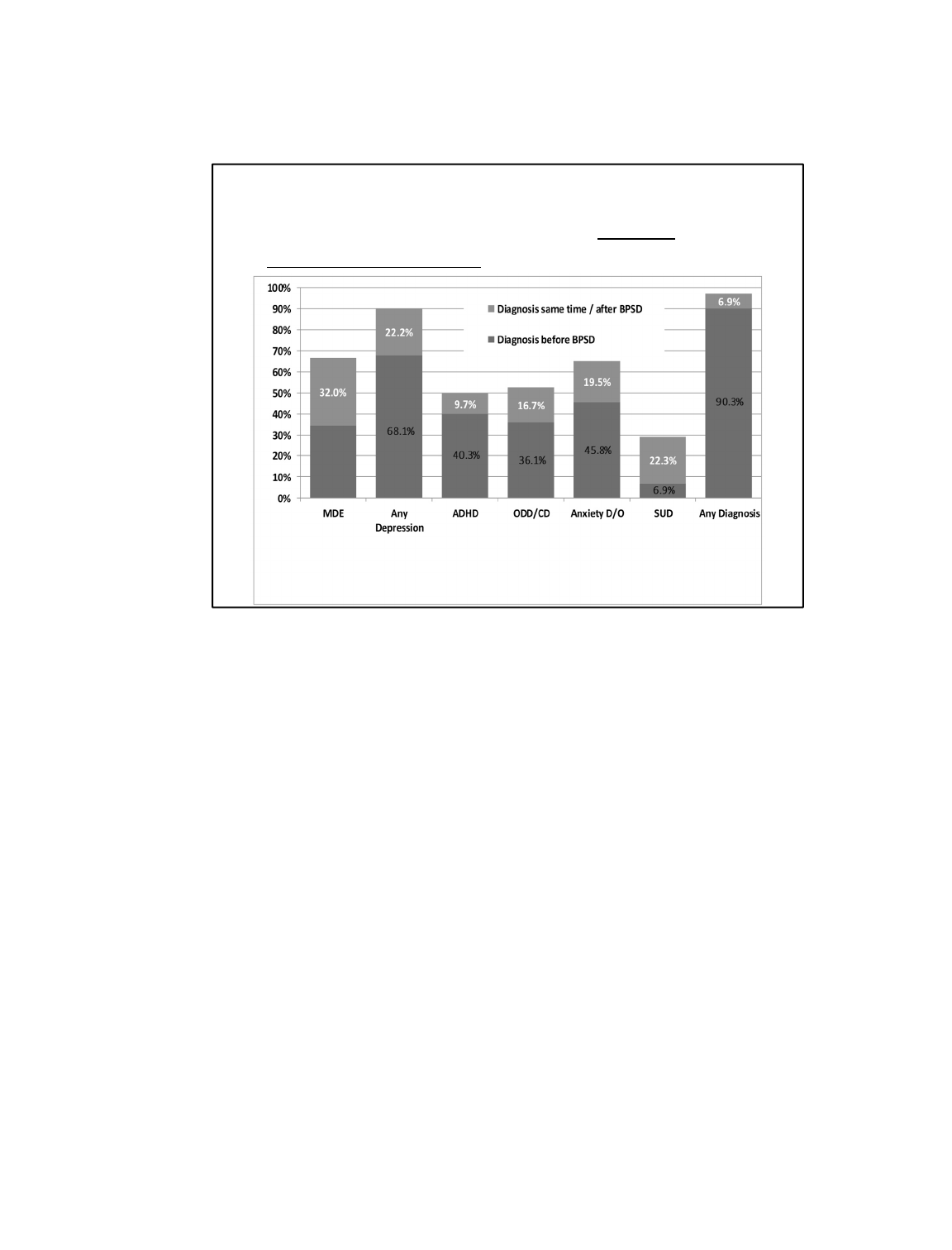
OnsetofDepressionandNon‐Mood
DisordersRelativetoOnsetofBipolar
SpectrumDisorders
34.7%
Thedifferentelementsofthisgraphareeasilydistinguishable.Thefontsarelargeenough
tobelegible.

SitexTreatmentInteraction
0
0.2
0.4
0.6
0.8
1
1.2
1.4
1.6
1.8
2
SER CBT COMB
Penn
Duke
Pediatric OCD Study Team (2004)
JAMA
.
N.B. Tics moderated outcome of sertraline, but not CBT March, et al., 2007
Thedifferentelementsofthisgraph
areeasilydistinguishable.Thefonts
arelargeenoughtobelegible.
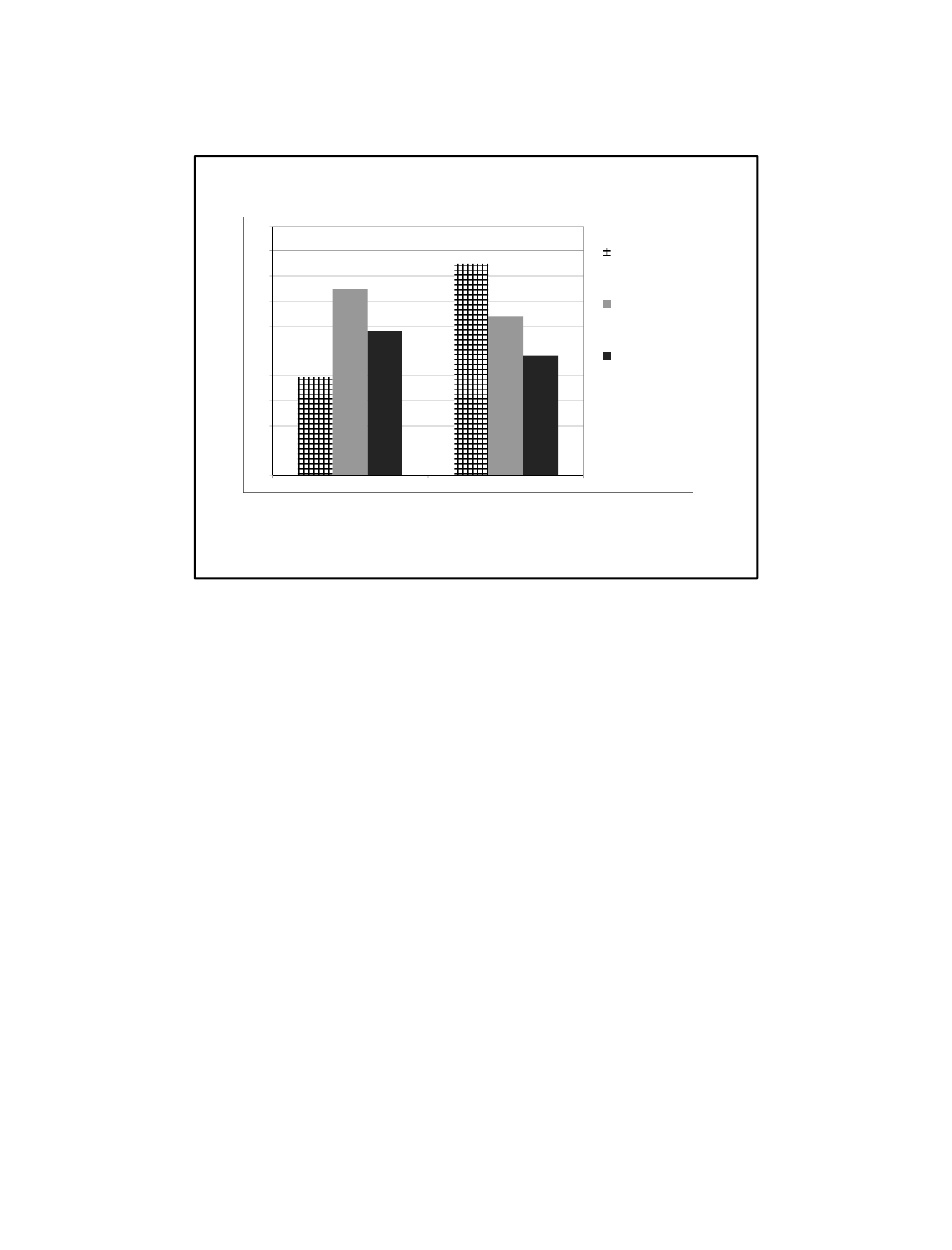
Levin, et al. JAMA Psychiatry. 2015;72(6):593-602.
0
10
20
30
40
50
60
70
80
90
100
ADHD Response (>30% Decrease) Cocaine Use (Positive week by urine or Self Report)
Placebo
MAS XR
60mg
MAS XR
80mg
*
*
*
*p<.05
Higher Dose Mixed Amphetamine Salts Extended Release is
Helpful in ADHD and Cocaine Use Disorder (n=126)
% OF SAMPLE
• 13 week Randomized Controlled Trial
• Diagnosis: Cocaine Use Disorder and ADHD
• Treatment: Cognitive Behavioral Therapy (CBT) +/- mixed
amphetamine salts extended release (MAS XR)
AACAPComment:Thisgraphusespatternsandcolorstodistinguishthethreevariables.
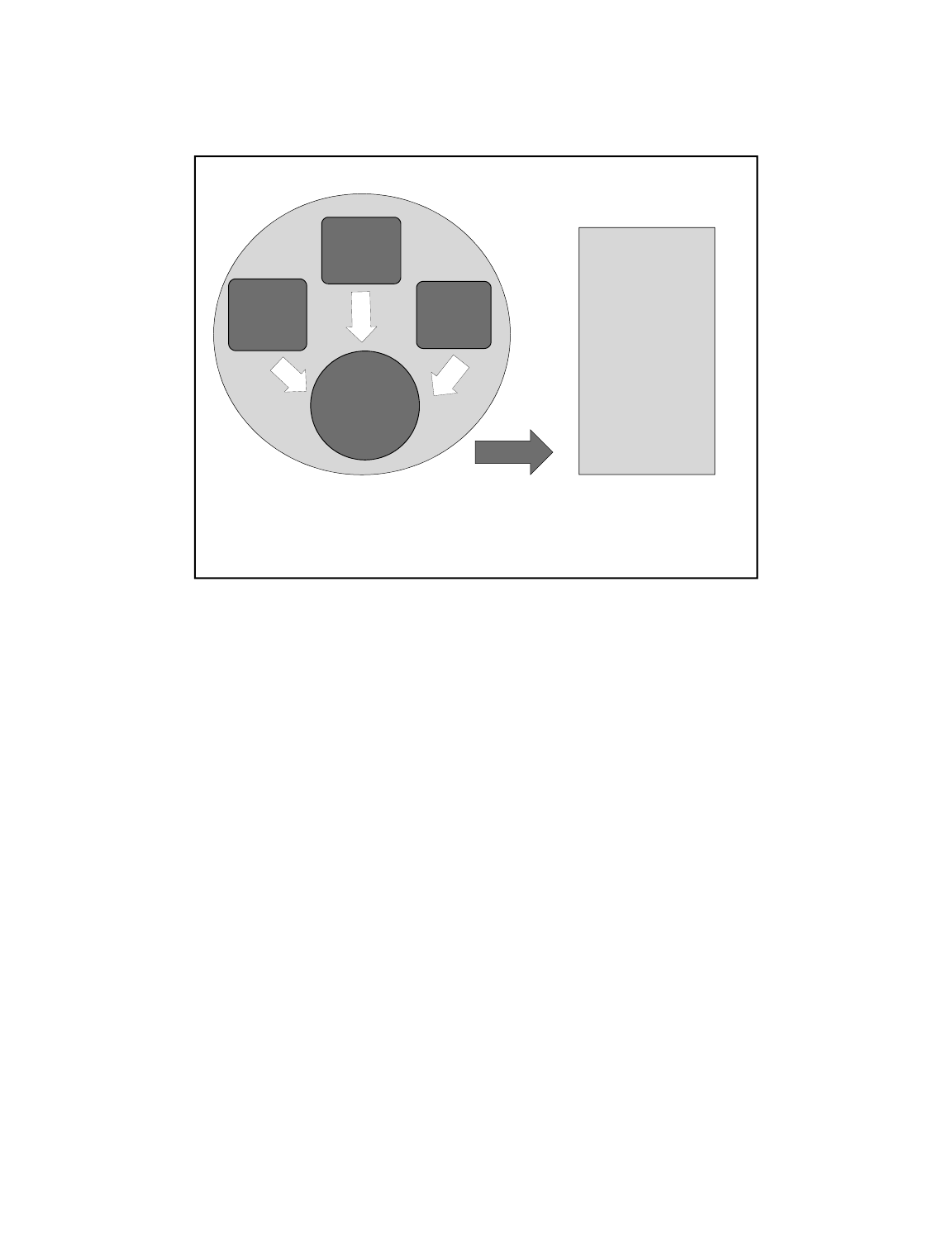
Child
and
Family
Networkof
PCPs
Networkof
Schools
Networkof
Community
Providers
Tele
AcademicMedical
Center
Patientcare
Patient
consultation
Research
participant
recruitment
Workforcetraining
Gettingtherightpersoninfrontofthepatient(child/family)attherighttimewiththe
rightevidence‐basedtreatmentutilizingtherighttechnology.
THEMODELOFCARE– ABIGGERPARTOFTHESOLUTION
Thisgraphicpresentationusescontrastingcolorsandlegiblefont.
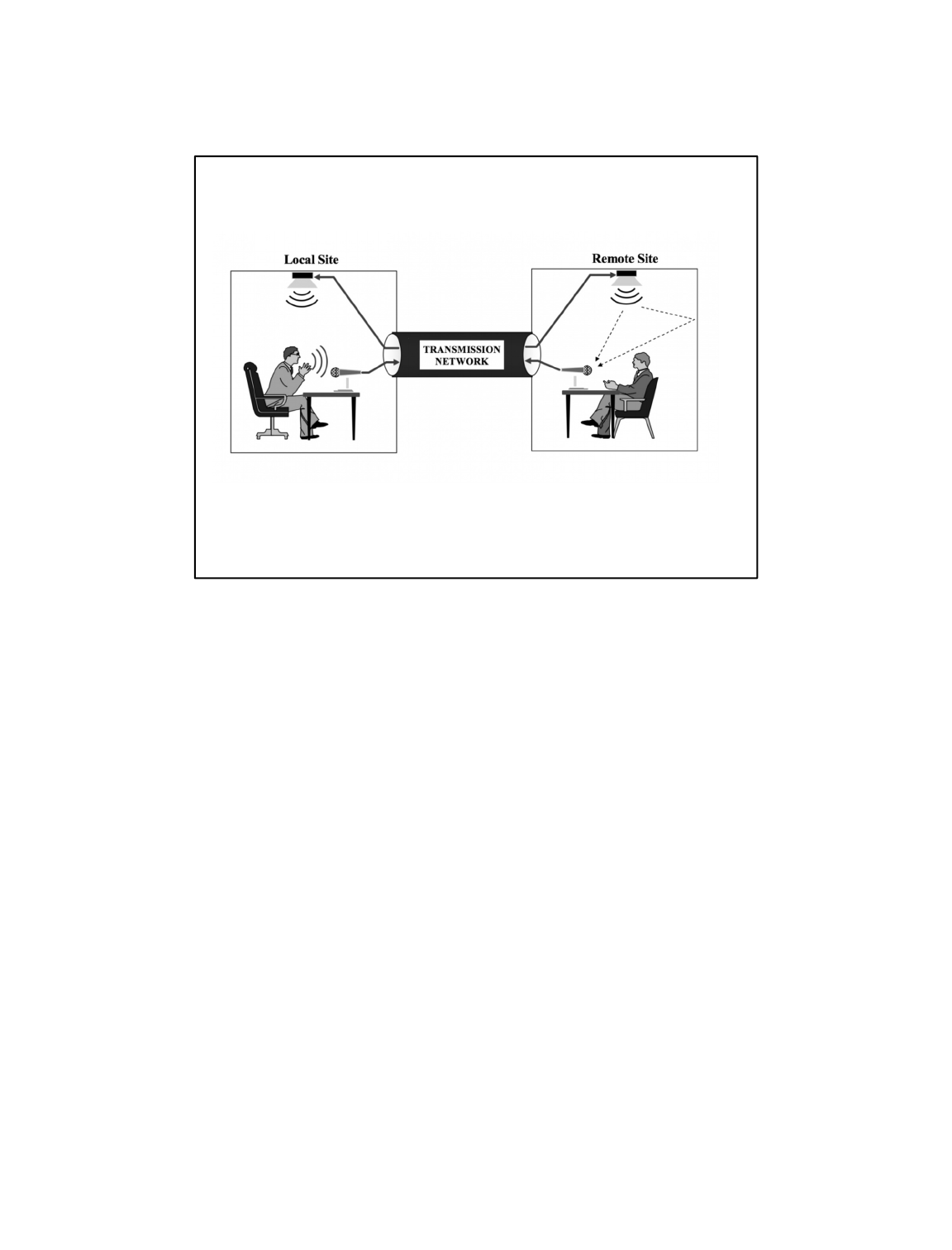
EchoExplained
https://segmentfault.com/a/1190000015945986
Thisimageandthetextarebothcrispandclear.

e‐TextbookofChildandAdolescentMental
Health.IACAPAPGeneva.2013.P8
Thisimagecontainsasignificantamountoftext,however,thescaleandhighqualityofthe
imagemakesitveryeasytoread.
9

Juvenile SUD: Summary
• Juvenile SUD is commonly comorbid with
psychopathology.
• Screening, discussion, and documentation
constitute components of care of these youth.
• Treatment of psychiatry may reduce ultimate SUD.
• Treatment of comorbid youth require both SUD
and psychiatric interventions.
• Pharmacotherapy can be effective in youth with
SUD problems.
This summary captures the content of the slides (not shown in the sample). The points are in
complete sentences. Uses large font for an easy read.
